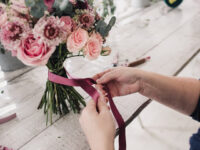How to Save Money on Invisalign
Invisalign Las Vegas is a popular option for adults. Generally speaking, if an orthodontist or dentist prescribes a full course of Invisalign for you and you follow it through, it should be relatively painless and efficient.
The treatment involves clear aligner trays that subtly move your teeth over time. The treatment varies per person, but most cases take about a year.

For many people, the most attractive aspect of Invisalign is the freedom it offers. You can eat and drink whatever you want, without worrying about damaging your invisible trays or experiencing a setback in your treatment. However, some common dietary habits should be avoided while wearing Invisalign to prevent damage and staining of the aligners and promote a healthy smile throughout your treatment.
Hard or crunchy foods can cause discomfort or increase sensitivity in your teeth. This can result in less efficient tooth movement, lengthening your treatment time and requiring more adjustments. Sticky or chewy foods can also trap food in between your teeth, which can lead to decay and gum disease. This can lead to more expensive or complicated dental work and can interfere with your Invisalign results.
The best option for your Invisalign diet is soft food options that require minimal chewing. Lean protein sources like grilled chicken, fish and tofu provide essential nutrients and are easy to chew. Cooked vegetables, soups and yoghurt can also be great Invisalign food choices.
If you must consume a hard or crunchy food, be sure to remove your aligners before eating them. Leaving them in can cause them to crack or discolour, which defeats the purpose of your Invisalign treatment and may require you to invest in new trays. It’s also important to avoid drinking hot or cold drinks with your aligners in, as this can cause them to warp and make it difficult for them to fit properly in your mouth.
Using reusable metal straws for your favourite drinks can help you avoid this problem, while also reducing the risk of tooth staining and promoting effective alignment of your teeth. It’s also recommended to brush and floss your teeth regularly, especially after every meal before putting your Invisalign trays in, to avoid plaque build-up that can damage or stain your trays.
Less Frequent Visits to the Dentist
If you have braces, it’s important to avoid hard and chewy foods. If you do, you risk damaging the wires and brackets that are part of your orthodontic apparatus. If you have Invisalign, however, you can eat whatever you want. You just have to remember to take out the aligner trays before eating or drinking and brush (or, at least, rinse your mouth) before putting the trays back in. This also helps ensure that sugar-loving bacteria do not get trapped inside your trays, as they would with metal braces.
Invisalign has another benefit over traditional braces in that it requires fewer progress visits to the dentist during treatment. During the treatment process, you’ll need to visit the dentist once every six weeks for your appointments, but these office visits aren’t as long as they are with traditional braces. This means you’ll spend less time in the dentist chair, which is a major advantage for busy people with tight schedules.
Your initial visit to the dentist will include an examination and X-rays to determine if Invisalign is the best choice for your smile. If you’re a good candidate for Invisalign, your doctor will create a custom treatment plan and then have impressions taken of your teeth to make the aligner trays. You’ll wear the trays each day for 20 to 22 hours until you get your desired results, which typically takes 12 to 18 months for adults and adolescent patients who follow their doctors’ instructions.
During the Invisalign treatment program, you’ll switch to a new set of aligner trays every two weeks. This way, your teeth will be continuously moving in the right direction. You’ll only need to visit the dentist for your regular follow ups and if you lose a set of trays.
If you’re considering Invisalign, it’s important to find a dental practice that provides high-quality care and service. A top-rated practice should offer a comfortable environment for open communication, and their experienced dentists will take the time to address your concerns and questions. They’ll help you determine if Invisalign is the right option for your smile, and they’ll provide clear and concise information about the procedure so you can make an informed decision about your treatment.
Less Time in the Dentist Office
Invisalign is an alternative to traditional braces that can be used to straighten the teeth and fix crooked jaws. It can help resolve issues with speech and biting, and is more comfortable than metal braces. While the cost can be high, there are ways to save money on Invisalign treatment.
Unlike traditional braces, which can get food stuck in the wires and brackets, Invisalign trays are removable. This means that you can take the trays out to eat or brush your teeth, which prevents food from becoming trapped and leads to a healthier smile.
The trays are made of smooth plastic and fit comfortably in the mouth, and they are easy to clean with a cleaning solution. They are also less noticeable in the smile, which can help you feel more confident during your Invisalign treatment.
You can also remove the trays for special occasions. For example, if you are going on a first date or having your picture taken for work, you can choose to take the aligners out for a few hours. Just make sure to keep them in for at least 20 to 22 hours a day to ensure effective treatment.
Another way to save on Invisalign is to shop around for the best deals. Look for clinics that offer transparent pricing and include all fees in the initial consultation. Then, find a dentist who can provide you with an accurate assessment of the level of complexity of your Invisalign case. This can help you save thousands of dollars in the long run.
Many dental practices offer specialized in-house financing programs to help their patients pay for Invisalign treatment. These programs typically have low or no interest rates and can make it easier to break down the costs into manageable monthly payments.
You can also use a flexible spending account or health savings account to help pay for the cost of Invisalign. These accounts allow you to use tax-free money for eligible medical expenses. The funds can be rolled over from year to year, making it easier to stretch out the cost of Invisalign over time.
Less Expensive
Invisalign is generally less expensive than traditional braces, though this will vary by provider and case. It also depends on what services are included in the price, and whether or not there is an option to pay for Invisalign through monthly payments – which may allow you to avoid interest charges.
While traditional metal braces can be costly, many insurance companies now offer coverage for Invisalign treatments. This is because the process to straighten teeth does not require the same type of maintenance as braces. However, you should know that the cost of Invisalign can add up quickly. This is why it is a good idea to discuss payment options with your orthodontist before you begin treatment.
The most common reason people seek orthodontic care is due to overcrowded teeth. Overcrowding occurs when there is not enough space in the mouth to accommodate all of your teeth, causing them to overlap and twist. This issue can lead to food stuck in between your teeth and even tooth decay if left untreated. Invisalign is a great tool for correcting overcrowding as it creates more room for your teeth, making them healthier.
Another issue that Invisalign can help fix is an overbite, which is when the upper and lower teeth overlap. This can be caused by genetics, bad oral habits like thumb sucking and extended pacifier use, or tooth grinding (bruxism). Invisalign aligners can help address this issue by moving the upper and lower teeth to their proper positions.
Finally, an underbite is when the bottom set of teeth sit inside the front of the top set when you close your mouth. This can cause gum recession and can also lead to issues like snoring, sleep apnea, chronic bad breath, and difficulty chewing. Invisalign can fix an underbite by shifting the lower teeth outward to correct this misalignment.
Unlike traditional braces, which are typically metal and have small wires and brackets that can cause mouth irritations and irritate your gums, Invisalign aligners do not contain any metal components. This makes them a much more comfortable option for your mouth. This is especially true if you have sensitive teeth or gums, and it can also help if you are concerned about how you will look with braces on your smile.




